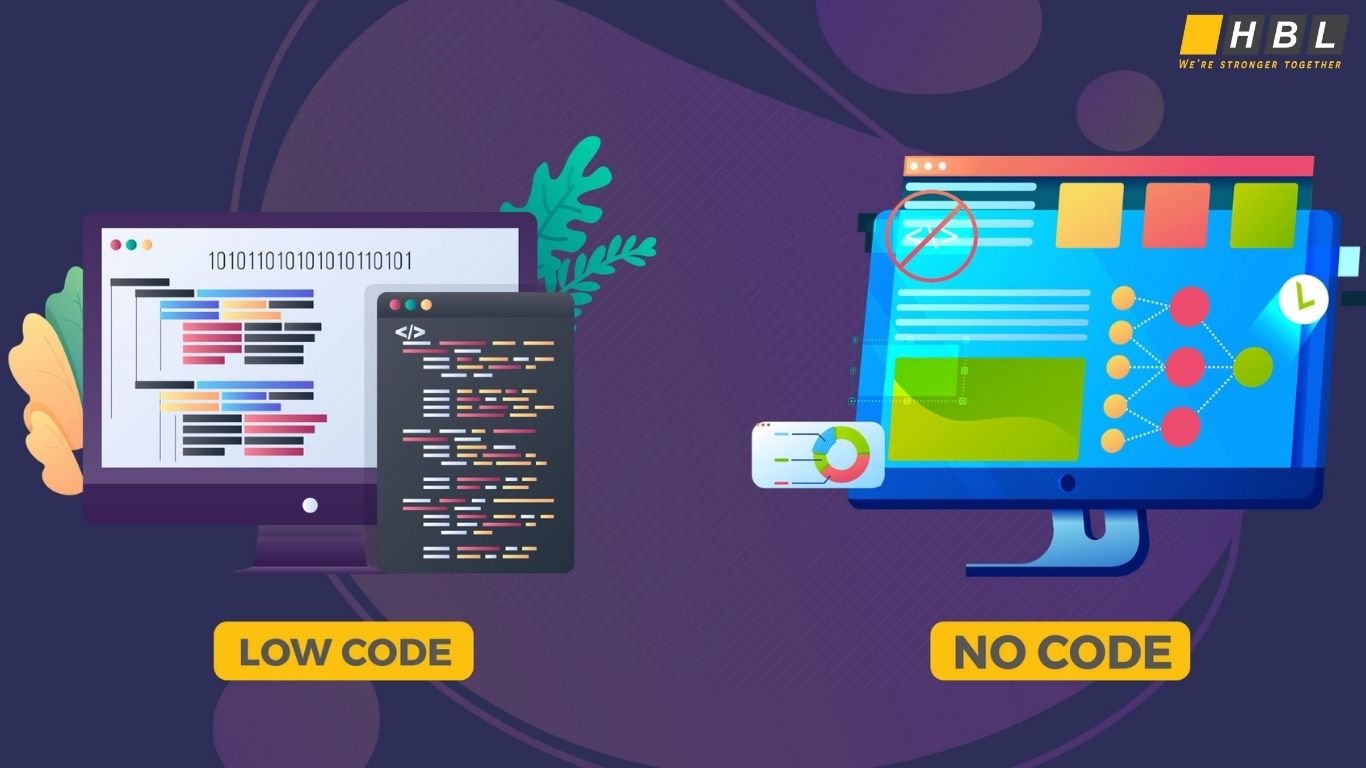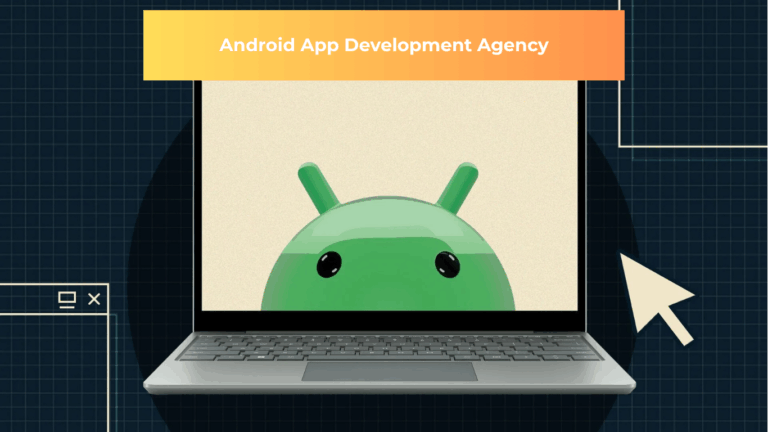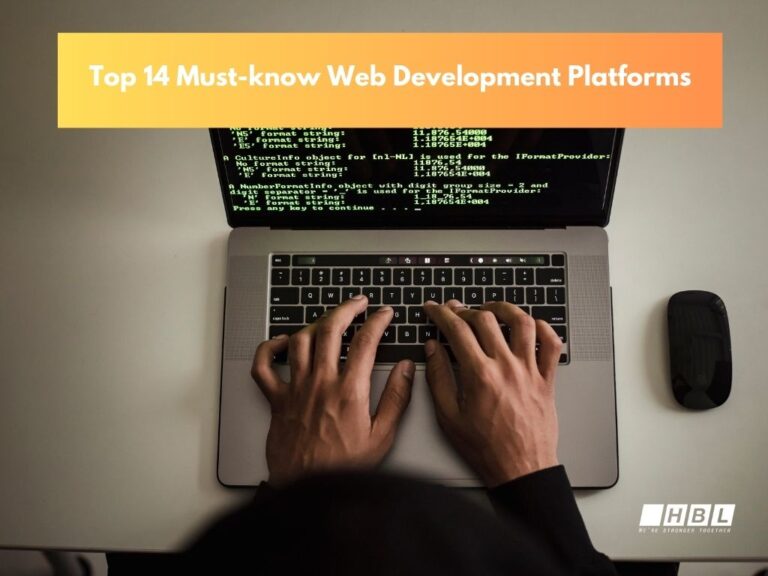In 2025, app builders Australia have democratized creation, but picking the wrong app builders australia platform could waste six figures and months of your time. 90% of mobile time happens inside apps, yet 67% of Australian businesses still haven’t launched one.
What You Need to Know

Choosing app builders australia starts with understanding three core questions: First, what development method suits your needs? App builders australia options include no-code platforms, low-code solutions , or custom development .
Second, plan your total investment: budget 15-25% annually for updates and support, plus $70-$320/month for infrastructure.
Third, ensure you follow Australian Privacy Act rules and consumer protection requirements before app builders australia go live—non-compliance creates costly problems.
Understanding App Builders Australia
App builders australia are platforms, frameworks, or development companies that help businesses create mobile and web applications for iOS, Android, or cross-platform use. These app builders australia solutions span from visual no-code editors like Adalo and Bubble to full-service agencies building enterprise applications.
Australia’s market for app builders australia continues expanding, with global mobile revenue projected at $935 billion by 2025. Australian app builders australia now serve three primary segments: entrepreneurs using no-code platforms for speed, mid-market businesses using low-code hybrid approaches, and enterprises building custom applications with sophisticated features.
What makes app builders australia special is understanding Australian market realities. App builders australia providers know Privacy Act 1988 requirements, Australian Consumer Law compliance, and how Australians use mobile devices. Android dominates at 54.3% of the market, while iOS holds 45.2%, so cross-platform compatibility through quality app builders australia becomes essential.
The ecosystem of app builders australia includes established names like Appetiser Apps and EB Pearls, international offshore app builders australia offering 30-40% savings, and emerging AI platforms promising prototypes from text descriptions.
Each category of app builders australia serves different needs: startups validating ideas, scaling companies needing customization, and enterprises demanding enterprise-grade security and performance.
The Selection Framework
No-Code: Speed-First Development
No-code app builders australia platforms like Appy Pie, Adalo, and AppMachine let non-technical people build functional applications through visual interfaces. These app builders australia democratize creation, making mobile development accessible to entrepreneurs without technical backgrounds.
When no-code makes sense:
-
You’re testing a new business concept quickly (2-4 weeks to launch)
-
Your app needs basic features: login, content display, simple transactions ($10,000-$40,000)
-
You’re building internal tools for small teams
-
You want to validate customer interest before major investment
What no-code does well:
Speed matters—app builders australia no-code launches beat traditional coding by months. These app builders australia charge $50-$200/month subscription pricing, require zero technical knowledge, and update instantly without app store delays.
Where no-code struggles:
Performance drops with app builders australia handling 50,000+ active users. Customization stays limited to platform components. You don’t own the code, creating vendor lock-in. Monthly app builders australia fees escalate as you add users and features.
Pro Tip: Use app builders australia no-code platforms to prove your concept works. Once customers validate your app builders australia idea, migrate to custom solutions for unlimited growth.
Low-Code: The Middle Path

Low-code platforms like OutSystems and Appian blend visual development with custom code flexibility. These app builders australia deliver 20-30% faster development than pure code-writing while maintaining reasonable customization.
low-code fits when:
-
You need custom workflows but face budget constraints
-
Your app requires moderate complexity (CRM, inventory, customer portals)
-
Your team has some technical talent for custom logic
-
You need rapid changes and iterations
low-code investment:
$50,000-$150,000 typical project range for these solutions. Timeline runs 2-4 months from planning through launch. App builders australia low-code still requires technical expertise—don’t assume “low-code” means non-technical.
Custom: Full Control
Professional custom app builders australia let software engineers write native or cross-platform code, delivering unlimited flexibility and complete ownership. Custom app builders australia dominate enterprise scenarios requiring unique capabilities.
Custom app builders australia suit these situations:
-
Your app’s features ARE your competitive advantage
-
You expect 100,000+ users and unlimited growth potential
-
Healthcare, fintech, or government compliance requires specialized architectures
-
Advanced integrations with legacy systems, APIs, or IoT devices are essential
-
Your business model depends on app innovation
Investment with custom app builders australia:
Simple-moderate apps: $30,000-$150,000
Complex enterprise applications: $200,000-$600,000+
AI-powered or blockchain solutions: $150,000-$1,000,000+
Timeline: 3-12+ months depending on scope
Why custom app builders australia deserve investment:
You own all code—no licensing fees or vendor constraints. Native performance delivers superior user experiences. Full device access means advanced camera, biometrics, AR/VR capabilities. Unlimited scalability supports millions of users. HBLAB’s experience building with 630+ professionals across 10+ years shows that businesses scaling past 50,000 users eventually migrate to custom solutions—making initial custom investment a growth advantage for ambitious companies.
Benefits of Professional App Builders Australia
Working with quality app builders australia delivers measurable advantages affecting business outcomes, user engagement, and competitive positioning.
1. Cost Efficiency Through Specialized
Hiring in-house developers costs $150,000-$250,000 annually per senior developer in Australia, before equipment, recruitment, and overhead. Quality app builders australia eliminate these fixed costs, converting them to project-based spending with clear budgets.
For startups and small businesses, app builders australia no-code solutions reduce costs 60-80% versus custom development. A $100,000 custom app might cost $20,000-$40,000 through app builders australia no-code platforms.
Custom app builders australia agencies provide access to 630+ specialized professionals—UX designers, mobile developers, backend engineers, QA specialists, DevOps experts—capabilities impossible for most businesses to build internally.
2. Speed-to-Market
Timing matters competitively. Companies launching apps within 6 months capture 33% more market share than late entrants.
App builders australia no-code delivers 80% faster cycles, transforming ideas into testable prototypes in 2-4 weeks versus 3-6 months. This acceleration enables rapid validation, iteration, and market response.
Cross-platform app builders australia frameworks compress timelines further—one Flutter or React Native codebase serves iOS and Android simultaneously, eliminating parallel development tracks.
3. Access to Emerging Technologies
Professional app builders australia continuously invest in innovation: AI/ML integration, AR/VR capabilities, blockchain security, IoT connectivity, 5G optimization.
Australian businesses increasingly demand AI features from app builders australia: personalization engines driving 20-30% engagement increases, intelligent chatbots reducing support costs 30-40%, predictive analytics for inventory and behavior forecasting.
HBLAB pioneered AI-powered app builders australia solutions since 2017, partnering with research institutes on computer vision, natural language processing, and predictive models for fintech and healthcare clients.
4. Scalability
67% of users abandon slow or crashing apps. Professional app builders australia build for scale from inception: cloud-native infrastructure, CDNs minimizing latency, database optimization, load balancing, real-time monitoring.
Custom app builders australia provide unlimited scalability—microservices architectures seamlessly expand from 1,000 to 1,000,000+ users without re-engineering.
5. Security & Compliance
Data breaches cost Australian businesses $3.35 million average. Professional app builders australia implement enterprise security: end-to-end encryption, multi-factor authentication, biometric integration, regular security audits, Privacy Act compliance, and GDPR frameworks for European users.
CMMI Level 3 certified app builders australia require security reviews at every development stage, automated vulnerability scanning, and compliance validation against Australian and international standards.
Transform your App idea into reality
Common Challenges
Building an app creates huge opportunities, but real-world obstacles can still derail projects or drive up costs if they are not managed well. Understanding the main challenges and practical solutions is essential for long-term success.
Challenge 1: Scope Creep
Many projects end up costing far more than expected because new features are added mid-build or the original complexity is underestimated. This happens even when working with experienced development teams.
How to handle it:
-
Launch a focused MVP with only core features, then improve based on real user feedback instead of assumptions.
-
Break the roadmap into clear phases with separate budgets and timelines.
-
Use a formal change-request process so every new feature is assessed for impact on time and cost.
-
Ask for transparent, itemised estimates that include a sensible contingency buffer.
Challenge 2: Technology Choice Paralysis
Teams often feel overwhelmed by choices: native iOS vs Android, cross‑platform frameworks like Flutter or React Native, no‑code vs custom builds, monolithic vs microservices architectures, and more.
How to handle it:
-
Start with a simple decision framework based on budget, timeline, expected scale, and feature complexity.
-
Get advice from experienced developers who can map options to your specific use case.
-
Run small proof‑of‑concept prototypes to test risky or uncertain technologies before committing.
-
Prioritise technologies with strong communities, active support, and a proven track record of scaling.
Challenge 3: Compliance and Legal Requirements
Australian apps must comply with the Privacy Act 1988, Australian Consumer Law, app store guidelines, and, in many cases, GDPR for European users. Ignoring these requirements can lead to app rejections, legal risk, and reputational damage.
How to handle it:
-
Bake privacy and compliance into the discovery phase instead of retrofitting them after development.
-
Design with privacy-by‑default: data minimisation, clear consent flows, and encryption for sensitive information.
-
Engage Australian technology lawyers to review Terms of Service and Privacy Policies.
-
Allocate time for app store preparation, including compliance checks, screenshots, and content review.
Challenge 4: User Adoption and Retention
Launching an app does not guarantee that people will download it, return to it, or recommend it. Many apps are opened once and then forgotten.
How to handle it:
-
Build pre‑launch buzz with a simple landing page, email list, and social channels.
-
Optimise your App Store and Google Play listings with clear titles, keywords, descriptions, and screenshots.
-
Design a guided onboarding that shows users the main value within the first minute.
-
Use push notifications carefully—relevant, value‑driven, and limited in frequency.
-
Track behaviour with analytics so you can identify where users drop off and improve those touchpoints.
Challenge 5: Maintenance and Technical Debt
Apps are not “set and forget.” Operating systems change, security standards evolve, and user expectations grow. Without a maintenance plan, technical debt builds up and becomes expensive to fix later.
How to handle it:
-
Reserve a realistic annual budget for updates, bug fixes, and performance improvements.
-
Align major updates with iOS and Android release cycles instead of waiting for emergencies.
-
Invest in clean, well‑documented code and thorough testing from day one to reduce long‑term friction.
-
Implement crash reporting and performance monitoring tools to catch issues early.
-
Set up ongoing support or retainer agreements instead of relying on ad‑hoc emergency work.
Key Trends Shaping App Development in 2025
The Australian app landscape is evolving quickly, and several major trends are reshaping how products are planned and built.
AI‑Powered Features Become the Norm
Artificial intelligence is moving from “nice to have” to “expected.” Users now look for personalised experiences that adapt to their behaviour and context.
Common AI applications include:
-
Recommendation engines that surface relevant content and offers.
-
Conversational chatbots that handle support around the clock.
-
Predictive analytics that highlight churn risks and high‑value users.
-
Computer vision powering visual search, quality checks, and AR experiences.
Many local businesses work with AI‑savvy development partners who can integrate models without needing a full in‑house data science team.
5G‑Driven Experiences
With 5G rolling out across Australia, new types of experiences are becoming realistic:
-
Real‑time video for entertainment, education, and telehealth.
-
Cloud gaming with low latency on mobile devices.
-
AR/VR experiences for retail, training, and events.
-
Rich IoT integrations connecting phones to smart homes, wearables, and industrial devices.
Modern apps need to take advantage of high‑speed networks while still working gracefully for users on slower connections.
Rise of Super Apps
Inspired by platforms in Asia, more Australian companies are exploring consolidated “super app” experiences.
Examples include:
-
Retail apps combining payments, ordering, delivery, and loyalty.
-
Transport and logistics apps combining ride booking, food delivery, and courier services.
-
Financial platforms that unify banking, investments, and insurance in one interface.
By bundling multiple services, these apps deepen engagement and reduce the need for users to juggle many separate apps.
Cross‑Platform by Default
Maintaining separate codebases for iOS and Android is increasingly seen as inefficient. Mature cross‑platform frameworks allow teams to:
-
Share most of the code across platforms.
-
Shorten development and release cycles.
-
Reduce maintenance overhead and inconsistencies between platforms.
Native builds still have a place—especially for games, heavy graphics, or deep hardware integrations—but cross‑platform has become the default choice for many business apps.
Progressive Web Apps (PWAs)
Progressive Web Apps blur the lines between websites and native apps. They are accessed via a browser but behave like apps: installable, offline‑capable, and fast.
Typical benefits:
-
No app store approval required for deployment or updates.
-
One codebase serves both web and mobile users.
-
Easier discoverability through search engines.
-
Lower initial build costs than full native apps.
Many companies start with a PWA to validate an idea before committing to full native builds.
Privacy as a Product Feature
Privacy and security are becoming key selling points rather than just compliance checkboxes. Users want to know how their data is collected, stored, and used.
Best practices include:
-
Architectures that minimise access to user data.
-
Biometric authentication like Face ID or fingerprint unlock.
-
Clear, granular controls over what data is shared.
-
Honest, simple explanations of data usage.
Apps that are transparent and respectful with data tend to earn higher trust and better retention.
AI‑Assisted No‑Code Tools
New no‑code platforms now weave AI into the build process itself. This makes it easier for non‑technical founders and teams to turn ideas into working prototypes quickly.
Modern capabilities include:
-
Generating app layouts and flows from natural language descriptions.
-
Automatic design suggestions that improve accessibility and usability.
-
Smart recommendations for components and integrations based on the app’s purpose.
These tools are particularly useful for early validation, letting teams experiment fast before investing in fully custom builds.
Choosing the Right Approach
Selection of a development path has a direct impact on cost, speed, and scalability. Clear criteria make the decision easier.
Your project should receive expertise it deserves!
Consider no‑code when you:
-
Need a prototype within weeks.
-
Have a tight budget.
-
Only require basic features.
-
Want to validate demand before committing heavily.
Consider low‑code when you:
-
Need more flexibility than no‑code can offer.
-
Have some in‑house technical capability.
-
Are building internal tools or standard business workflows.
Consider custom development when you:
-
See the app as a core business asset and differentiator.
-
Expect large user bases and long‑term growth.
-
Need advanced features, deep integrations, or strict compliance.
Combining Strategies
Many successful teams mix approaches rather than picking just one:
-
Start with a no‑code MVP to test the idea quickly, then rebuild the successful version in custom code.
-
Use custom builds for customer‑facing products, but rely on no‑code for admin dashboards and internal tools.
-
Begin with low‑code for quicker delivery, then incrementally replace high‑value modules with fully custom implementations as the product matures.
Working With Development Partners
Australia has a strong mix of local agencies, offshore partners, and global studios. When evaluating potential partners, focus on:
-
Proven experience with similar projects and industries.
-
Clear communication and transparent project management.
-
Design quality and user experience in their portfolio.
-
References or reviews from previous clients.
A good partner will help refine the idea, highlight risks early, and recommend a realistic mix of technology and scope rather than simply agreeing to everything on the wishlist.
Top App Builders and Development Companies in Australia
Selecting the right development partner significantly impacts project success, cost efficiency, and long-term support quality. This section profiles leading options across the spectrum from no-code platforms to full-service custom agencies.
Leading No-Code Platforms Available in Australia
- Adalo
- Best For: Simple mobile apps with native features
- Key Features: True native apps published to App Store and Google Play, drag-and-drop interface, built-in database, marketplace of components
- Pricing: From $50/month for basic apps
- Limitations: Performance constraints beyond 10,000 users, limited customization options
- Australian Support: 24/7 online support, extensive documentation
- Appy Pie
- Best For: AI-powered rapid app generation
- Key Features: AI app builder creating apps from text descriptions, extensive template library, cross-platform deployment
- Pricing: From $18/month for basic features
- Limitations: No code export, customization within template boundaries
- Australian Support: Global support team, Australian business hours coverage
- Bubble
- Best For: Complex web applications without coding
- Key Features: Visual programming environment, database design, API integrations, extensive plugin marketplace
- Pricing: Free tier available, paid plans from $29/month
- Limitations: Web-focused (not native mobile), steeper learning curve than competitors
- Australian Support: Community forums, extensive tutorials, paid coaching available
- Glide
- Best For: Apps built directly from Google Sheets or Excel
- Key Features: Instant app generation from spreadsheet data, real-time sync, elegant templates
- Pricing: Free for basic apps, from $25/month for professional features
- Limitations: Best for data-centric apps, limited complex logic capabilities
- Australian Support: Documentation and email support
Top Custom Development Companies in Australia
- Appetiser Apps (Melbourne, Sydney, Brisbane)
- Specialization: Startup MVPs and product launches
- Notable Clients: Hey You, GIVIT
- Track Record: 200+ apps launched
- Strengths: End-to-end services (strategy, design, development, marketing), strong MVP focus
- Pricing: $50-$99/hour, typical project $200K-$999K
- Rating: 4.8/5 based on 24 Clutch reviews
- EB Pearls (Sydney)
- Specialization: Enterprise mobile and web applications
- Established: 2004
- Strengths: Well-organized project management, comprehensive services from strategy to deployment, strong technical expertise
- Pricing: $25-$49/hour, team size 250-999
- Rating: 5.0/5 based on 59 Clutch reviews, 11 reviews in past 6 months
- Notable: Praised for weekly check-ins, visual QA boards, proactive communication
- Appello Software (Sydney)
- Specialization: Robust, secure iOS and Android apps
- Strengths: Excellent communication, on-time delivery, competitive pricing, personable team approach
- Pricing: $100-$149/hour, typical projects $10K-$49K for smaller scopes, $50K+ for comprehensive builds
- Rating: High marks for responsiveness and value for money
- Notable: 100% of reviewers highlight excellent communication and timely delivery
- PowerGate Software (Melbourne)
- Specialization: Mobile app and custom software with offshore team
- Pricing: <$25/hour (significant cost advantage), team size 250-999
- Strengths: Budget-friendly without compromising quality, strong technical expertise, agile project management
- Rating: 5.0/5 based on 38 Clutch reviews
- Notable: All 10 mobile app development reviews are 5 stars
- Developer Bazaar Technologies
- Specialization: User-friendly iOS and Android applications
- Strengths: Exceptional ability to translate client ideas into products, strong project management, technical proficiency especially in Flutter
- Pricing: $25-$49/hour, typical projects $10K-$49K
- Rating: 4.9/5 based on 59 reviews, 5 new reviews in past 6 months
- Notable: Clients praise commitment to innovation and transparent, responsive communication
HBLAB – Your Trusted Software Development Partner
With 10+ years of experience and a team of 630+ professionals, HBLAB provides expert custom development, AI-powered solutions, and IT team augmentation services tailored for Australian businesses seeking quality at competitive rates.

Why Australian Businesses Choose HBLAB:
Global Expertise, Local Understanding: Operating across multiple time zones with fluent English-speaking teams, HBLAB delivers seamless communication and collaboration despite geographic distance. Our project managers align with Australian business hours for real-time coordination.
CMMI Level 3 Certification: Our mature development processes ensure consistent quality, predictable timelines, and reduced rework—critical factors that Australian enterprises demand from technology partners.
Cost Efficiency Without Compromise: HBLAB’s service model delivers 30-40% cost savings compared to Australian agencies while maintaining equivalent or superior quality standards. Our clients reinvest these savings into marketing, additional features, or business growth initiatives.
AI Innovation Since 2017: Long before AI became mainstream, HBLAB pioneered AI-powered applications through partnerships with leading AI research institutes. Our expertise spans computer vision, natural language processing, predictive analytics, and generative AI integration.
Flexible Engagement Models: Whether you need a dedicated development team, specific expertise augmentation, or complete project delivery, HBLAB adapts to your preferred working model. Our offshore, onsite, and hybrid options provide maximum flexibility.
Proven Track Record: Having delivered 800+ successful projects globally across 24+ industries including fintech, healthcare, e-commerce, logistics, and government sectors, HBLAB brings deep domain expertise to every engagement.
End-to-End Services: From initial strategy and UX design through development, testing, deployment, and ongoing maintenance, HBLAB manages the complete lifecycle—eliminating the complexity of coordinating multiple vendors.
Contact HBLAB for a free consultation
Frequently Asked Questions
How much does it cost to build a mobile app in Australia?
App development costs in Australia range from $30,000 to $300,000+ depending on complexity, features, and development approach. Simple apps with basic features cost $30,000-$80,000, mid-complexity apps with custom features and integrations run $80,000-$200,000, while enterprise-grade apps with advanced AI, complex architecture, or regulatory compliance requirements exceed $200,000 and can reach $600,000+.
What is the mobile app development company in Australia?
Australia hosts numerous reputable mobile app development companies across major cities including Sydney, Melbourne, Brisbane, and Perth. Leading agencies include Appetiser Apps (specializing in startup MVPs with 200+ apps launched), EB Pearls (established in 2004 with 250-999 employees and 5.0/5 rating), Appello Software (known for excellent communication and on-time delivery), and PowerGate Software (offering cost-effective development with <$25/hour rates).
How to create mobile apps that make $3,000 a day?
Generating $3,000 daily revenue ($90,000/month or $1.08 million annually) requires exceptional user scale, monetization optimization, and market fit. Based on industry benchmarks, you would need approximately 300,000-500,000 monthly active users with $3-$5 ARPU (Average Revenue Per User) through subscription models, or significantly higher user volumes (2-5 million) for ad-based revenue at $0.50-$1.00 per user. Successful strategies include subscription-based models (fitness, meditation, productivity apps achieving high LTV), in-app purchases (gaming apps with conversion rates of 2-5%), marketplace commission (taking 10-20% of transactions), and premium features with freemium conversion funnels.
How much does it cost to pay someone to build an app?
Hiring app developers costs between $25-$200/hour depending on location, expertise level, and engagement model. Australian developers charge $100-$200/hour, while offshore developers in regions like Vietnam, India, or Eastern Europe cost $25-$75/hour. For complete project delivery, expect $30,000-$80,000 for simple apps, $80,000-$200,000 for mid-complexity applications, and $200,000-$600,000+ for enterprise solutions.
How much is an app with 10,000 users worth?
App valuation depends on revenue generation, user engagement, and growth trajectory rather than user count alone. Using industry-standard valuation methods, an app with 10,000 monthly active users could be worth $50,000 to $500,000+ depending on these factors. Revenue Multiple Method: If generating $50,000 annual revenue with 2-3× multiplier for ad-based apps, valuation reaches $100,000-$150,000. Subscription apps command higher 4-6× multiples—$50,000 annual revenue × 5 = $250,000 valuation.
Can ChatGPT-4 build an app?
ChatGPT-4 can generate functional code for simple apps but cannot independently build production-ready applications without significant human oversight and expertise. The AI excels at rapid prototyping, code generation for specific features, debugging assistance, and explaining technical concepts, dramatically accelerating development for experienced programmers.
Do I need an LLC to start an app?
In Australia, you don’t legally require an LLC (Limited Liability Company, an American structure) to launch an app, but you should establish an appropriate business structure before generating revenue or hiring contractors. Australian equivalent structures include Sole Trader (simplest, no separation between personal and business liability), Company (Pty Ltd) (separate legal entity, limited liability, preferred for growth and investment), or Partnership (multiple owners sharing profits and responsibilities). When to formalize structure: Before accepting payments, hiring employees/contractors, entering commercial agreements, or raising investment capital.
Can I build an app for free?
You can build basic apps entirely free using no-code platforms offering free tiers, though functional limitations and lack of publishing capabilities constrain free options. Free app builders like Flipabit, AppMachine, and Glide provide drag-and-drop interfaces, basic features, and unlimited build time at no cost. Critical limitations of free plans: Cannot publish to App Store or Google Play (requires paid subscription, typically $30-$100/month), branded with platform watermarks/ads, limited to basic features and templates, restricted user capacity (often 50-100 users max), no custom domains, and limited storage/bandwidth.
Do apps make money?
Yes, successful apps generate substantial revenue, but monetization success depends heavily on strategy, execution, user scale, and retention. Revenue potential varies dramatically by model: Subscription apps (fitness, productivity, meditation) earn $1-$5+ ARPU with 60-70% margins, making them highly profitable at moderate scale. Gaming apps with in-app purchases generate $0.10-$3.00 per download depending on engagement and monetization optimization. Ad-supported apps earn $0.05-$0.50 per active user monthly based on engagement and CPM rates ($5-$20 typically). E-commerce and marketplace apps take 10-20% commission on transactions.
READ MORE:
– Free AI Cover Letter Generator: The Complete 2025 Guide for Job Seekers (With Zero Cost Tools)
– Machine Learning and Cyber Security: A Complete 2025 Guide for Modern Enterprises
– Trusted Data Solutions: Building the Foundation for Enterprise Success in 2025




